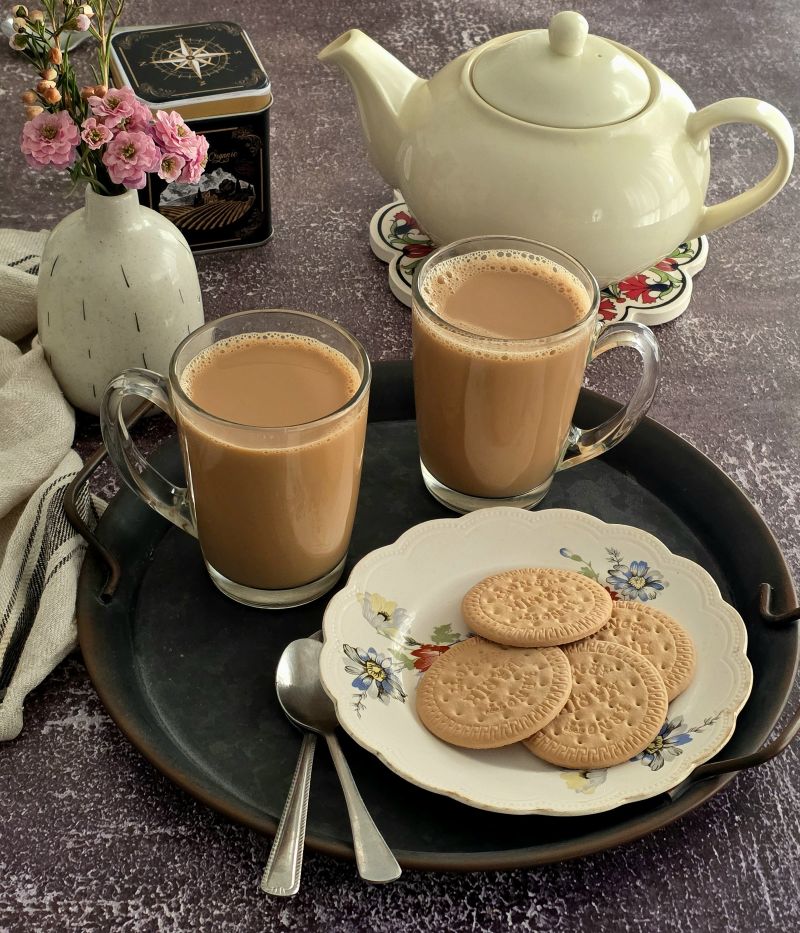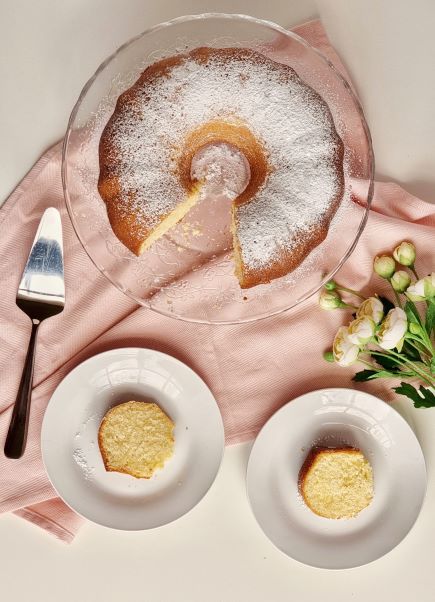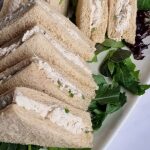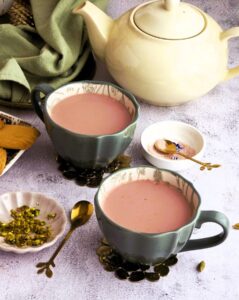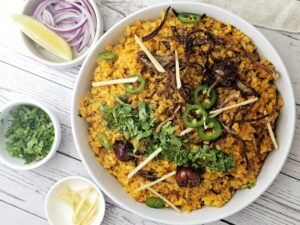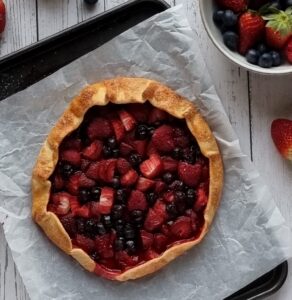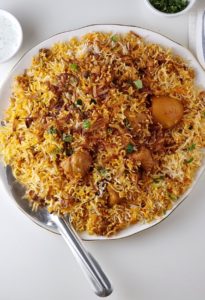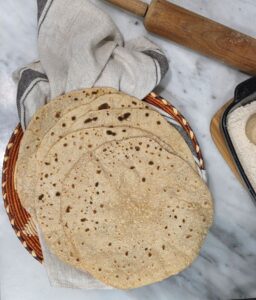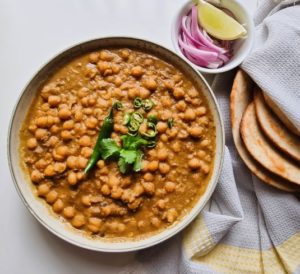If you’ve ever sipped on a hot, milky cup of tea at a roadside dhaba, resturant or in a cozy Pakistani home, chances are you’ve had this: Traditional Pakistani Chai. It’s not spiced, fancy, or complicated—just strong black tea brewed with milk and water, the way it’s made daily in millions of kitchens across Pakistan and mine too ! This no-frills version is perfect for those who love bold flavor without the extras. Let’s make it the authentic way.
You might also hear this kind of chai called “Mixed Chai” — it’s different from the kind of tea that’s brewed in a teapot and served with milk on the side. This one’s bold and direct: tea leaves, milk, water, all simmered together until strong and just right.
(And please, whatever you do — don’t call it chai tea. “Chai” already means tea, so you’re basically saying tea tea, let’s not do that 😄)
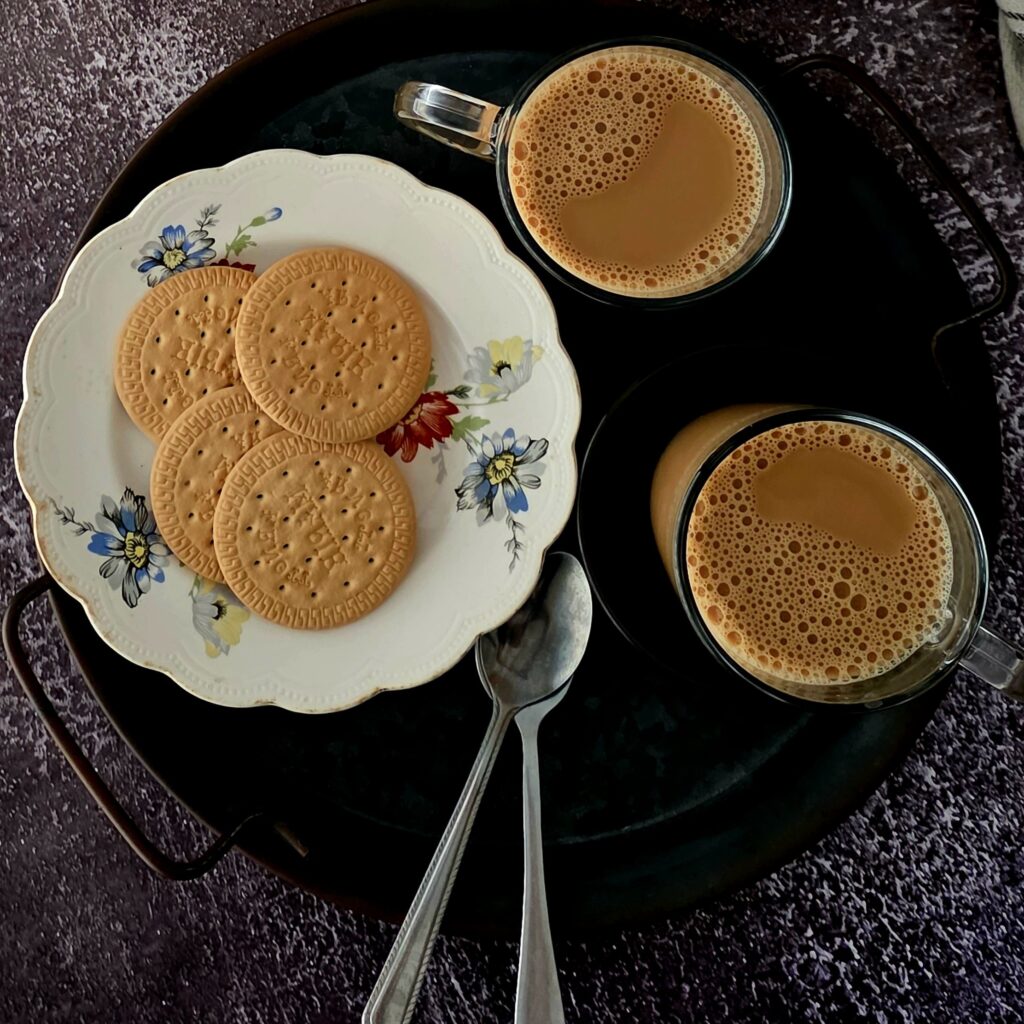
A Little Bit About Chai
Chai in Pakistan isn’t just a drink. It’s a whole ritual — woven into our culture, our routines, our conversations. The day kicks off with a cup of chai, and when that 3:30 slump hits in the afternoon, chai is the go-to cure (yes, it’s real and it works!). But truth be told, there’s no set time for chai — morning, evening, even after dinner… it fits in anytime, anywhere.
Chai brings people together. Whether it’s deep life chats or spontaneous laughter, problems get solved and happy moments are shared over a good, hot cup of Chai. And when someone says, “Come over for chai,” they don’t mean just the tea — they mean a full table of samosas, tea cakes, biscuits, or snacks to go with it. (I’ll link all my favourite chai-time recipes here!)
What do you need for Pakistani Chai?
All you need is 3 ingredients to make a delightful cup of chai:
Loose Leaf Tea – Use good quality leaf tea. I use Tapal , its a very popular brand across Pakistan and is easily available in Pakistani/Indian grocery stores in Australia. Dilmah tea is another good alternative and is easily available at Coles or Woolworths.
Milk – Full cream milk works best for that rich, smooth texture. You can use light milk, but it won’t have the same depth or creaminess.
Water – Tap water is fine, but you can use filtered or bottled water if you prefer. Just make sure it’s cold when starting.
Sugar (Optional) – Add to taste if you like your chai sweet. Regular sugar works fine, or feel free to use jaggery, stevia, or any other sweetener you prefer.
How to Make Traditional Pakistani Chai – Step by Step
- Boil the Water
In a small saucepan or pot, add water and bring it to a boil over medium heat. - Add Tea Leaves
Once the water is boiling, add your loose leaf tea. Reduce the heat to low, cover the pot, and let it simmer for about 5 minutes so the tea can brew and develop its flavor. - Add Milk
Now pour in the milk and increase the heat to high. Let it come to a full boil. - Aerate the Chai
Once it starts boiling, lower the heat again. Use a ladle to lift and pour the chai back into the pot a few times — this step helps to aerate the tea and deepen its flavor. Do this for around 3–4 minutes. - Strain and Serve
Pour the chai into cups or a teapot through a fine mesh strainer. Serve immediately while it’s hot and frothy!
Tips & tricks for best Cup of Chai
- Tips & Tricks for the Best Cup of Chai
- Don’t over-boil the water
Just bring the water to a gentle boil — once it starts bubbling, you’re good to go. Over-boiling can make the tea taste flat or slightly off. - Brew the tea low and slow
After adding the tea leaves, reduce the heat and cover the pot. Letting it steep gently on low heat helps extract flavor without making it too bitter or overpowering. - Let the milk come to a full boil
Once you add the milk, turn the heat up and let it boil. This helps develop that rich, frothy texture. But don’t walk away — chai has a sneaky habit of boiling over and making a big mess (ask me how I know 🙈). - Use a ladle to aerate the chai
This step really elevates the flavor! Use a ladle to lift and pour the chai back into the pot a few times while it simmers. It gives the chai a creamy texture and brings out a deeper taste. - Strain well before serving
Use a fine mesh strainer to remove tea leaves before pouring. This gives you a smooth cup without bits at the bottom. - Serve immediately
Chai tastes best fresh off the stove, when it’s hot, frothy, and comforting. It loses its magic if it sits too long.
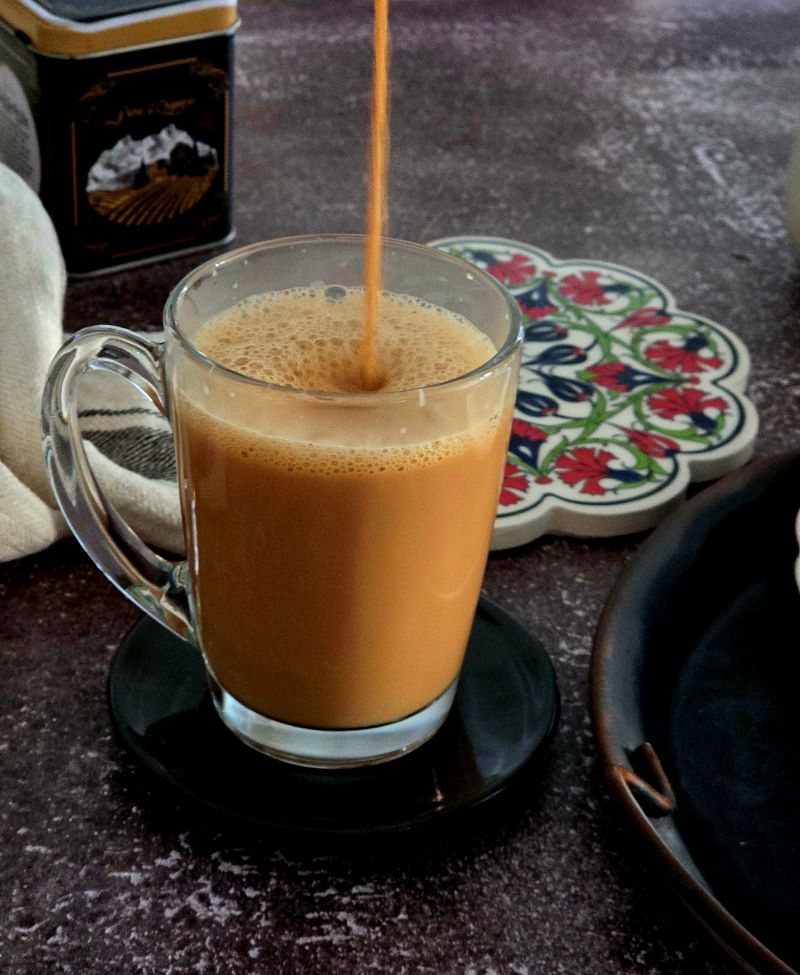
Can I use tea bags instead of loose leaf tea?
Leaf tea (or loose leaf tea) consists of larger, whole or broken tea leaves, which release more flavor and aroma when brewed. Tea bags, on the other hand, usually contain fannings or tea dust — the smaller, leftover bits of tea leaves. While tea bags are convenient, they often lack the depth and richness that loose leaf tea brings to traditional Pakistani chai.
If you’re in a pinch, use 1–2 black tea bags per cup, but let them steep a little longer for a stronger brew.
Can I use a milk alternative?
You can! While full cream dairy milk gives the creamiest and most authentic result, you can use alternatives like oat milk, almond milk, or soy milk. Just make sure whatever you use can handle boiling without splitting or curdling. Barista-style versions tend to work best.
Can I use evaporated milk for chai?
Yes! While it’s not traditional, evaporated milk (like Carnation) makes a wonderfully rich and creamy cup of chai. It adds depth and smoothness without needing as much simmer time. Just keep in mind the flavor will be slightly different from the classic version made with fresh milk — not authentic, but still absolutely delicious.

What to serve with chai?
There’s no shortage of delicious options when it comes to enjoying something alongside your chai — and it all depends on whether you’re in the mood for sweet or savoury.
If you lean savoury, classics like shami kebabs, samosas, pakoras, are always a hit. Prefer something sweet? Gulab jamuns and jalebi are iconic choices, while tea cakes, cookies, and biscuits make for a more laid-back, traditional chai experience.
Want to go a little fancier or planning a hi tea? Add chicken sandwiches, chicken bread, or even a variety of high tea snacks to elevate your spread.
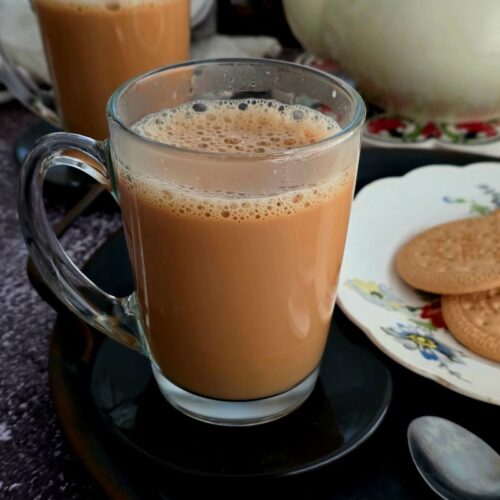
Traditional Pakistani Chai
Ingredients
- 2 Tsp Loose Leaf Tea
- 1 cup Milk
- 1¼ cup Water
- Sugar (optional)
Instructions
- In a small pot add water, bring it boil Don't over boil, Just when it starts bubbling add leaf tea. Turn the heat low and cover the pot for 2 minutes.
- Turn the heat high and add milk. Allow it to boil but don't leave it unattended.
- Once it starts boiling, lower the heat again. Use a ladle to lift and pour the chai back into the pot a few times — this step helps to aerate the tea and deepen its flavor. Do this for around 3–4 minutes.
- Pour the chai into cups or a teapot through a fine mesh strainer. Serve immediately while it’s hot and frothy!

